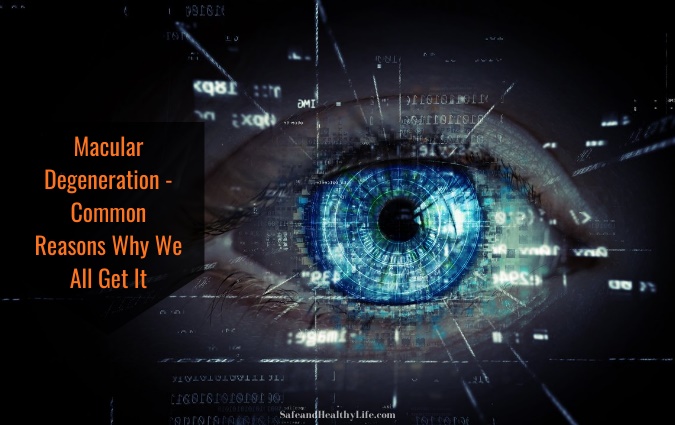
Macular degeneration treatment is gaining increasing prominence in people older than fifty. Macular generation is a common cause of vision loss in mid-age people. The macula is the dominant part of the retina.
The macula is responsible for facilitating central vision in our eyes. Macular generation happens mostly after the age of sixty and is known as age-related macular degeneration. In most cases, it is a painless condition and occurs in both eyes.
Lifestyle factors are the main reason behind the rise of macular degeneration in human beings.
For instance, high blood pressure, smoking, obesity, etc., can increase the risk of macular degeneration. With these things in mind, let’s take a glance at the various aspects of macular degeneration.
An Overview of Macular Degeneration
Macular degeneration is an eye disease usually related to aging. Macular degeneration steadily blurs central vision, which leads to gradual vision loss. Note that the macula is responsible for processing detailed images.
When the macula becomes damaged, pursuing daily activities like reading and driving may become popular. Your central vision is what you see on the side when looking straight ahead. It is worth noting here that macular degeneration doesn’t cause blindness.
This is because it doesn’t affect your peripheral vision. In its early stages, macular degeneration depicts no symptoms. That’s why people don’t suspect they are suffering from this eye disorder. Now you know what macular degeneration is, let’s take a glance at its types and symptoms.
Types of Macular Degeneration you should know
There are two types of macular degeneration that you should be aware of. They are as follows:
Dry Macular Degeneration
This type of macular degeneration is most common. Almost 80% of people suffering from macular degeneration have a dry form. The precise reason behind the occurrence of dry macular degeneration is still unknown.
However, researchers believe that genetic and environmental factors are primarily responsible for dry macular degeneration.
The dry form of macular degeneration happens when the light-sensitive cells in the macula break down. The loss of vision in this condition is pretty slow and gradual. Age-related damage of a crucial support membrane contributes to the dry form of macular degeneration.
Wet Macular Degeneration
Note that the wet form of macular degeneration is less common. But at the same time, it leads to severe vision loss in patients compared to dry macular degeneration. Wet macular degeneration is the most common cause of severe loss of vision.
Wet macular degeneration happens when there is the growth of abnormal blood vessels underneath the retina. In wet macular degeneration, there is a higher risk of blood and fluid leakage. The wet form of macular degeneration is much worse as it creates a large blind spot in your visual field’s center.
Symptoms of Macular Degeneration
To be precise, macular degeneration is a progressive eye illness. In simple words, macular degeneration gets worse over time. In macular degeneration, it is pretty common not to notice vision issues in the earlier stages.
That’s why; if you are in the earlier stages of macular degeneration, you may not have symptoms. The first symptom you may notice is a sudden or gradual change in your vision’s quality. You may also notice straight lines appear inaccurate to your eyes.
With time, this may contribute to severe vision loss. As stated above, there are two forms of macular degeneration.
Here are the symptoms associated with both these forms of macular degeneration.
The symptoms of dry macular degeneration are as follows:
- Reduction in the central vision
- Blurriness at times
- Difficulty adapting in low light conditions
- Inaccuracy of straight lines in your field of vision
- Damage to the retinas
- Issues associated with the recognition of peoples’ faces
Note that some symptoms of wet macular degeneration are similar to those of dry macular degeneration.
Here are the signs of wet macular degeneration you should be aware of.
- A hazy spot lingering in your field of vision
- Extremely hazy vision
- Vision loss symptoms gradually worsening
- A hazy spot in your eye’s central vision
When compared to dry macular degeneration, wet macular degeneration progresses much faster. Consult an ophthalmologist if you are experiencing the symptoms stated above.
Treatment for Wet Macular Degeneration
The best wet macular degeneration treatment is to consult a low-vision rehab specialist. The specialist can instruct you on how to adapt to and cope with vision loss. The ophthalmologist may also inject medication into your eyes directly to inhibit the growth of blood vessels.
Treatment for Dry Macular Degeneration
Consulting a low vision rehab specialist is probably the best dry macular degeneration treatment. In addition, the ophthalmologist may ask you to undergo surgery.
Let’s hope you are well aware of the reasons and treatment options associated with macular degeneration now.
About The Author:
Deborah Stephens is a budding ophthalmologist born in Miami, Florida. She graduated from the Johns Hopkins Wilmer Eye Institute. She has a passion for writing on the latest topics related to eye issues.




